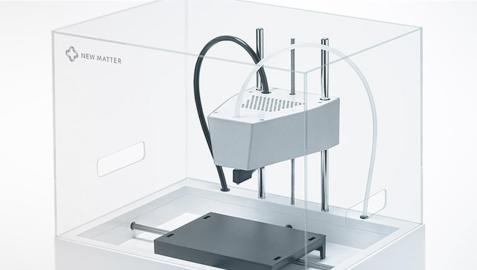The market for 3D printers has exploded over the last few years. There have been great advances in printer hardware, materials, and the software ecosystem required to allow 3D printers to become a viable tool for engineers and hobbyists alike. There are many 3D printing technologies available, but for the home user extrusion based FDM printers are by far the most prevalent option.
Extrusion based FDM printers are viable today due to the efforts of the open source/open hardware community. It really is amazing what this community provides, not only functionality, but the relatively high quality of the designs available. For 3D printing, everything in the open source world starts with the RepRap project, the original open source 3D printer project. RepRap provides designs for everything you need to build a 3D printer: mechanics, electronics, motors and firmware.
Because the open source solutions are solid, and there is no monetary cost to using open source designs, they form the basis for a huge number of 3D printers. These range from maker kits and garage based Kickstarter projects starting at a few hundred dollars, to “prosumer” printers from established companies costing a few thousand. These RepRap derived designs also proliferate the “home user” market segment. For the current state of the industry, I would define the home user segment as those devices that sell for less than $500, come fully assembled, and require relatively little technical knowledge to operate. These devices are not targeted at either the “maker” or professional audiences, rather they appeal to a very broad range of consumers.
When New Matter decided to develop the sub-$400 MOD-t 3D printer for the home, they were faced with the challenge of differentiating their offering in a very crowded market. New Matter targeted many facets of the overall design to stand apart, including industrial design, ease of use, and a curated online marketplace to which the printer directly connects, providing interesting printable objects just a click away. Interestingly, New Matter chose to avoid using open source firmware to drive their printer for two reasons: to be able to retain unique intellectual property in their firmware, and to avoid using stepper motors.
All of the open source 3D printer projects I’ve seen, including RepRap, use stepper motors to drive the mechanism. Stepper motors are a great option for the maker community because they’re relatively simple to drive. However, there are some considerable downsides to steppers. They are typically very noisy, and are relatively costly when compared to servo systems based on brushed DC motors. The home ink-jet printer market moved way from steppers over twenty years ago for these very reasons.
By using brushed DC motor servos, New Matter was able to create a product that is quiet enough to keep on your desk. They reduced the per-motion-axis motor cost from approximately $10 for the commonly used steppers to just a few dollars per DC servo. Also, the use of DC servos allowed for motor stall based homing, eliminating the need and expense of limit switches. And, because of their smaller size, the industrial design of the product has more options. Together, the benefits of using DC motors enabled New Matter to design a beautiful, quiet product at a price point that makes it an ideal 3D printer for the home.

